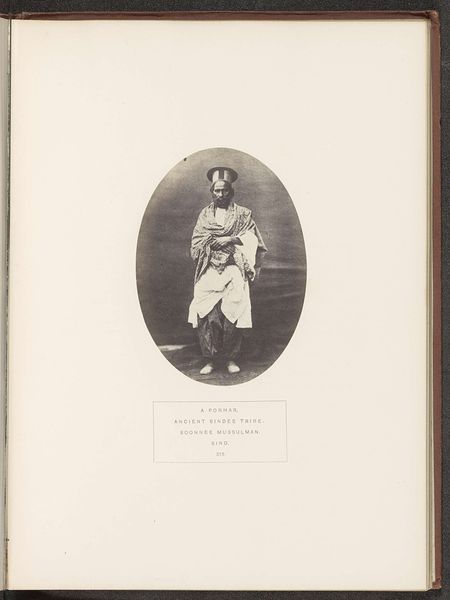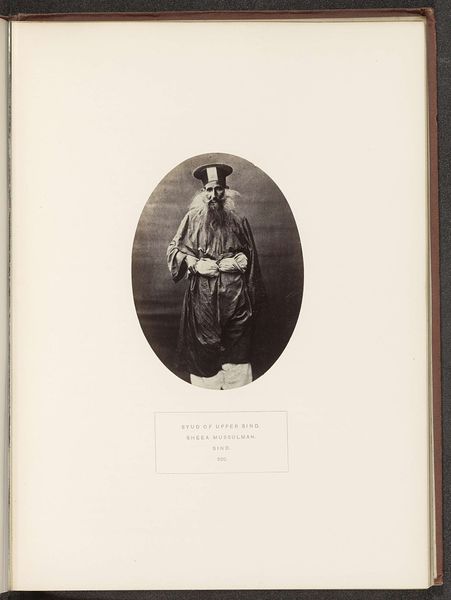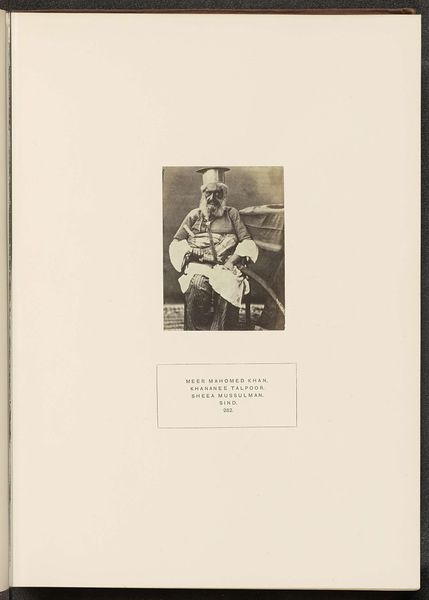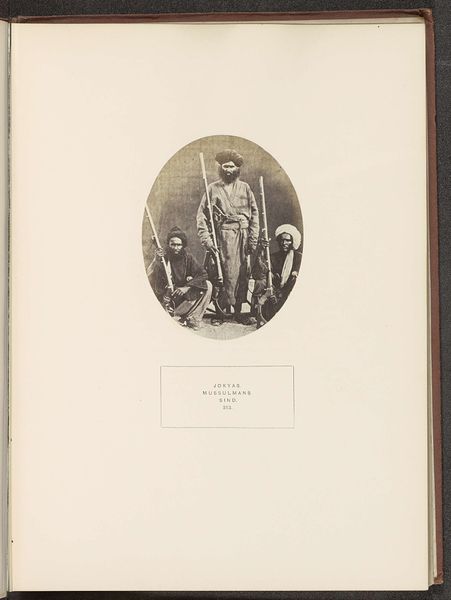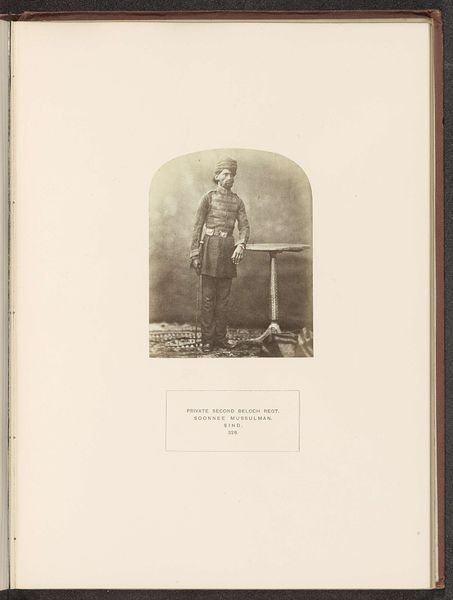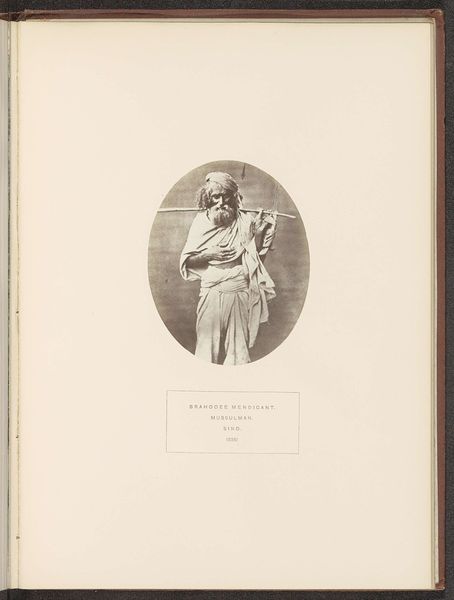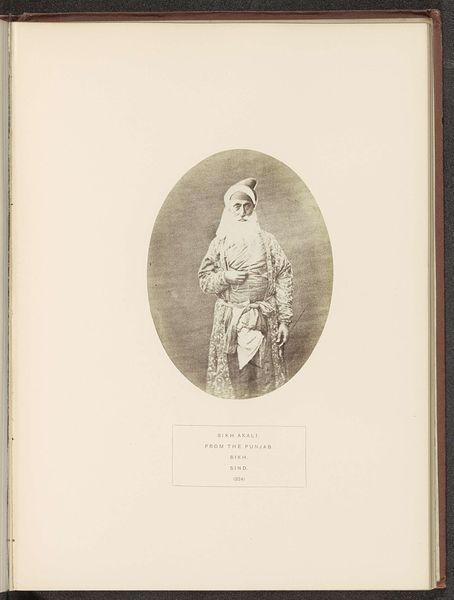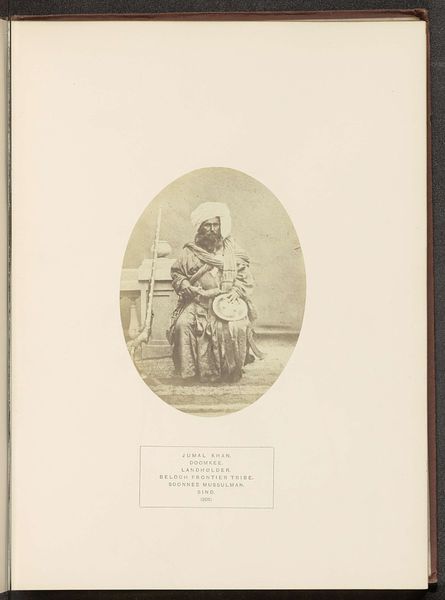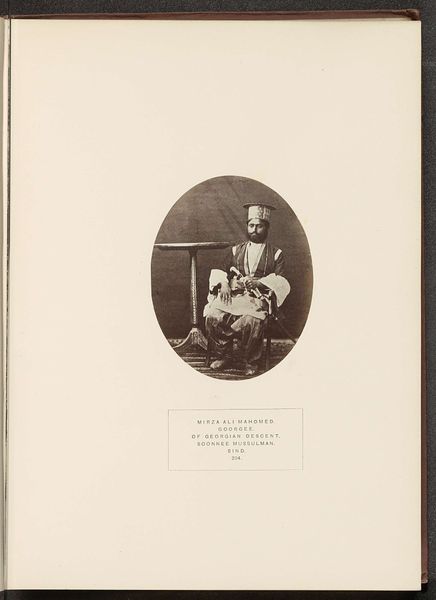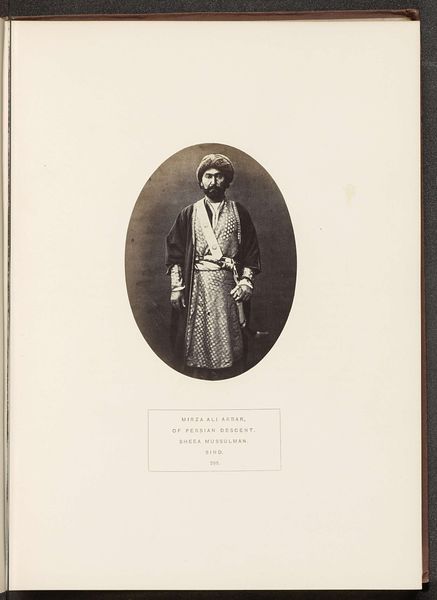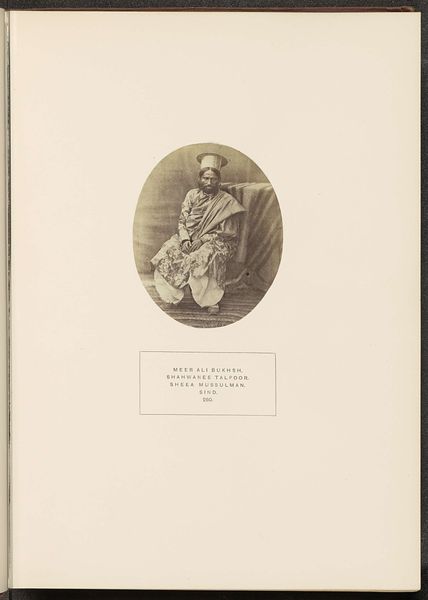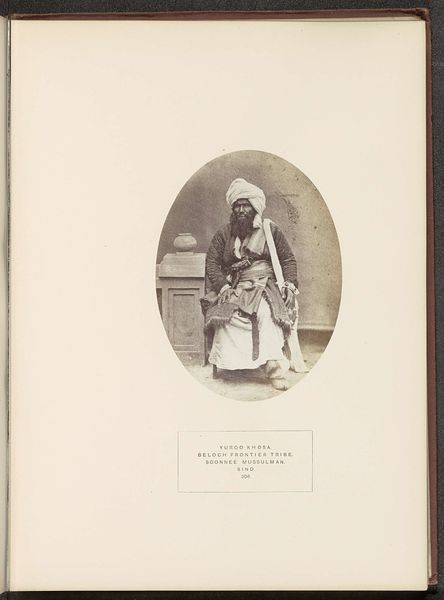
Portret van Dost Mahomed, een landbezitter en stamhoofd uit Sindh before 1872
0:00
0:00
photography
#
portrait
#
african-art
#
photography
#
orientalism
Dimensions: height 106 mm, width 86 mm
Copyright: Rijks Museum: Open Domain
Curator: Here we have a striking photographic portrait. It's titled "Portret van Dost Mahomed, een landbezitter en stamhoofd uit Sindh" which translates to "Portrait of Dost Mahomed, a landowner and chieftain from Sindh," dating to before 1872. Editor: It’s remarkably stark. The oval frame within the larger page feels very contained. All tonal, with a great focus on texture in the fabrics and especially his beard. There's an incredible presence, a certain stoicism. Curator: Tanner captured a figure of considerable influence within a colonial framework. Sindh, now part of Pakistan, was then under British control. Think about how portraiture functions here. Editor: It really makes you consider what this image was made for. The materials must have been difficult to manage, the subject, well that's a different kind of material. Photography wasn't some neutral, objective recording. Curator: Precisely. It's about constructing an image within power dynamics, even reinforcing Orientalist tropes. Consider his attire, how it might be viewed. Not necessarily ethnographic, yet potentially feeding into such a perception for a Western audience. Editor: You see the labor involved. Not just of the sitter and photographer but the chemical processes that were crucial. This wasn't mass production; it has the touch of a maker throughout. The subdued palette makes me consider how that was developed in early photographic materials. Curator: The gaze he returns confronts assumptions embedded in colonial viewpoints. It prompts questions about representation, who holds the power to portray whom, and for what purpose. Editor: For me, this shows an intimate picture into the labour conditions within the discipline. Curator: Ultimately, I feel this photograph encourages critical reflection on the gaze, power, and the complicated legacies of colonial representation in early photography. Editor: Agreed. Seeing how early methods transform something complex into an accessible form leaves us thinking about how things come into existence even in photographic images such as this one.
Comments
No comments
Be the first to comment and join the conversation on the ultimate creative platform.
